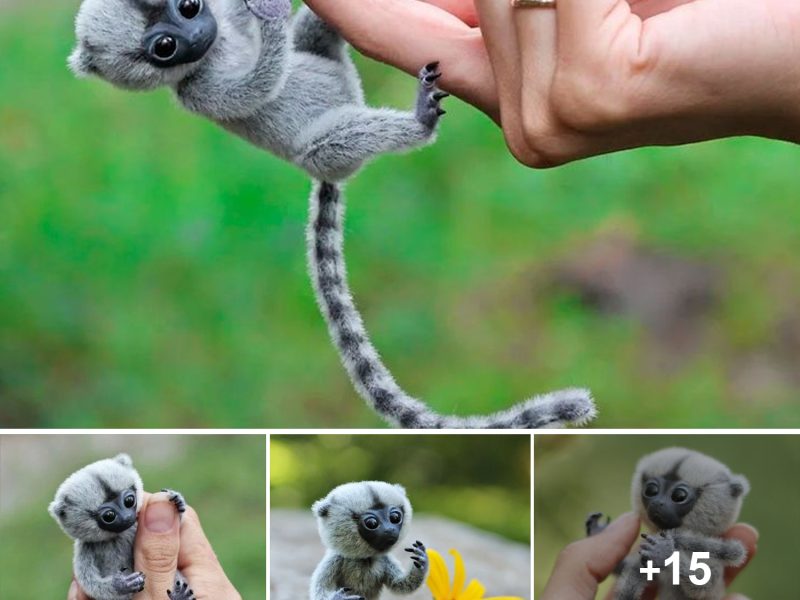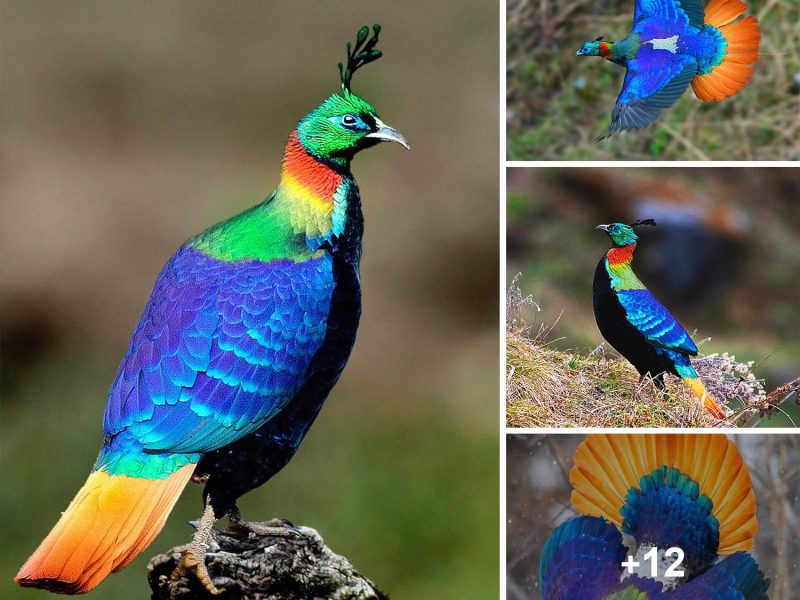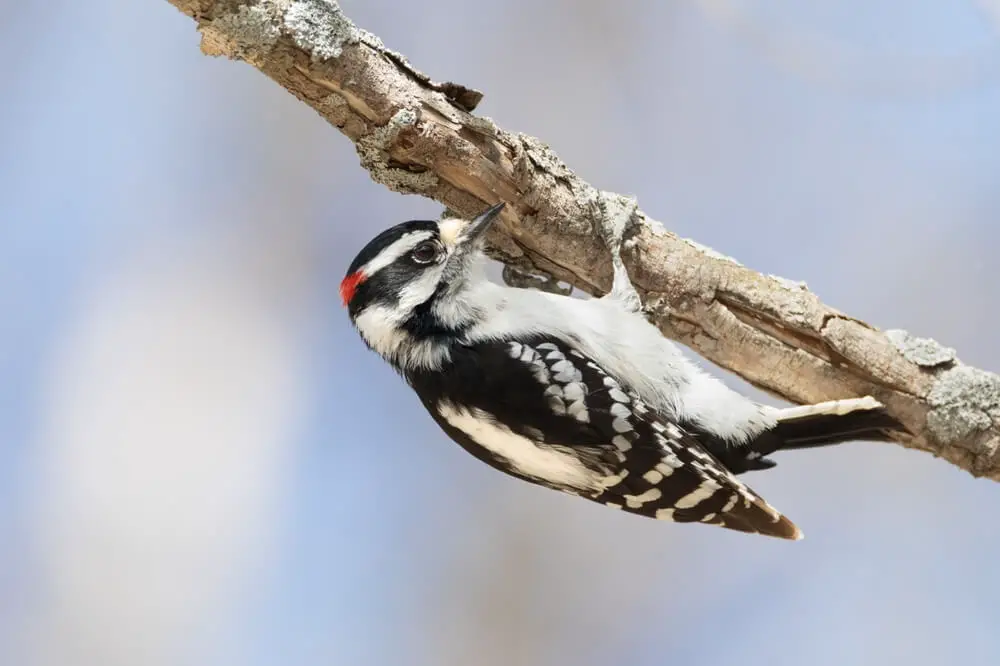
Downy woodpeckers (Dryobates pubescens) are delightfully small woodpeckers. They often visit backyard bird feeders and are widespread in the United States.
These birds, affectionately called “downies”, have black and white patterned feathers. The male has a bright red spot on the back of his head. The downy woodpecker is the smallest overall in North America, with smaller, shorter bills than other species of woodpeckers. Their butterfly flight and acrobatics are enjoyable to watch, and once a male and female pair up, they work together to raise their young.
This populous species is a favorite among many people, and there are quite a few amazing facts about these birds.
Read on to learn more about 26 of them.
1. Downy Woodpeckers Perform A “Butterfly Flight” For Courtship
The breeding season of downy woodpeckers is April through May, and during this time they perform a butterfly-like flight to find mates.
Often seen on warm, sunny days before nesting a male and female follow each other. In flight, they hold their wings high and flap them slowly much like a graceful butterfly.
2. They Are Acrobatic & Agile
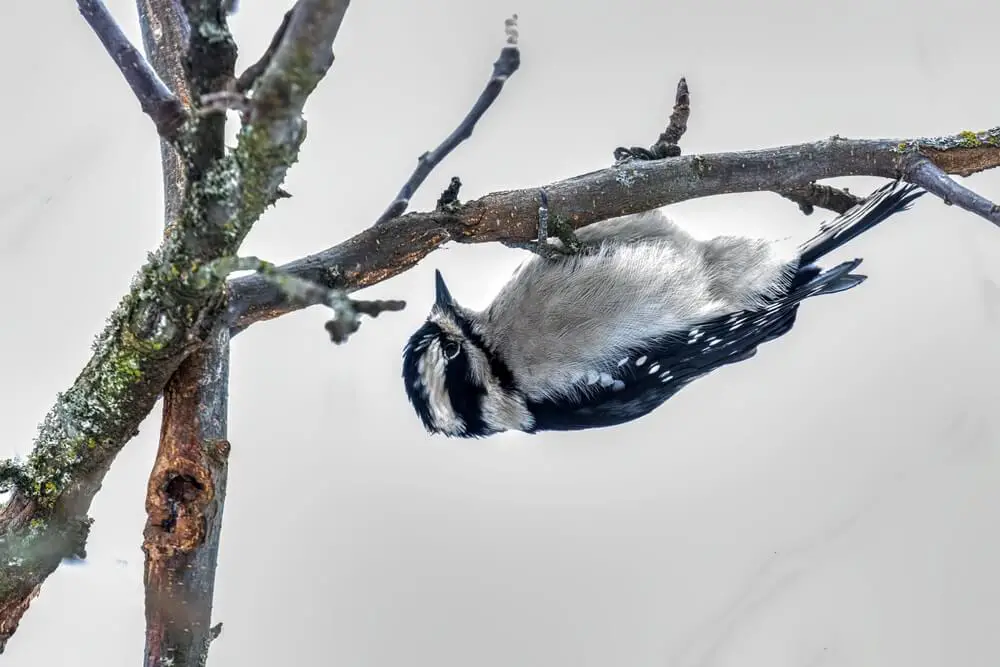
Downies are acrobatic flyers. They can dart around trees and other vegetation. These birds are capable of easily moving horizontally and backward on tree trunks.
When roosting on surfaces, their stiff tails help to support and prop them up. They can also hang upside to access insects.
3. Downy Woodpeckers Are The Smallest North American Woodpeckers

Downy woodpeckers are the smallest of North American woodpeckers, with a length of 5.5 to 7.7 inches from head to tail.
They typically weigh 0.7 to 1 ounce and have a wingspan of 9.8 to 11.8 inches.
4. Their Overall Size Is Bigger In Colder Areas
Smaller birds, such as the downy woodpecker, will lose heat faster than larger birds.
To adapt to cold weather in areas such as Canada, downies are found to be noticeably bigger than downies living in warmer areas such as Florida.
5. They Have Comparatively Small Bills
The downy woodpecker has a black, silver-metallic colored bill.
Its petite bill is about ⅓ the length of its head which is shorter than other species of woodpeckers.
6. Downies Have Checkered Black-And-White Patterning
Downy woodpeckers have a striking black and white checkered-like pattern on their folded wings.
Their black heads have large white stripes, one below and one above the eye. The middle of their backs has a thick white stripe.
They have a white chin and belly.
7. Males Have A Red Spot On Their Heads
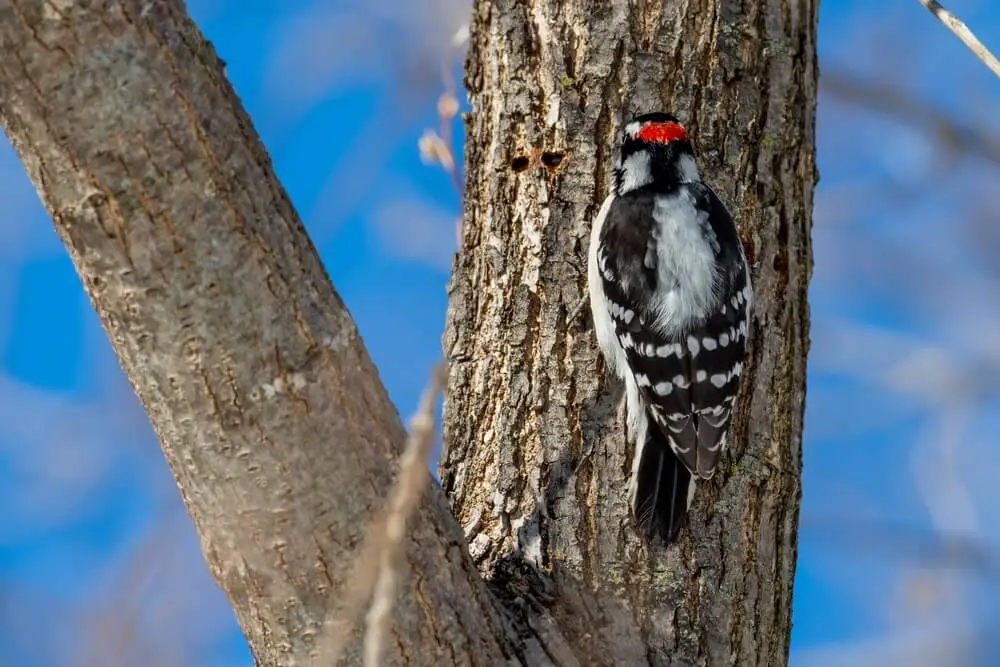
Males and females have the same black-and-white patterning.
However, males have a distinctive red spot at the back of their heads, that females do not have.
8. Feather Patterns On The Head Are Individualized
Much like human fingerprints, the feather pattern on downies’ heads is individual to each bird.
These slight variations and the absence or presence of a red patch allow these birds to recognize each other and whether they are female or male.
9. Their Plumage Varies Slightly Over Regions
Western-located downy woodpeckers are darker in shades overall.
Pacific coast downies are dingier with a brownish-gray coloration.
Eastern downy woodpeckers have starker white feathers.
10. Downy & Hairy Woodpeckers Are Easily Mistaken For Each Other
Downy and hairy woodpeckers are easily confused with each other. They have nearly identical plumage and are found in the same geographical range.
Generally, downy woodpeckers are smaller in size and have shorter bills than hairy woodpeckers. Male hairy woodpeckers have a red head patch broken with a black vertical stripe.
11. They Are Common & Widespread
Downy woodpeckers are common throughout the United States, with no evidence of population decline. They are not typically present in the arid southwest.
Downies live in forests, backyards, river groves, and mountain areas. They visit parks, cities, and backyard feeders.
In the woods, they join mixed flocks of birds such as nuthatches and chickadees. While they prefer deciduous trees, they can be found in coniferous or mixed forests as well.
12. They Do Not Usually Migrate
These woodpeckers are often permanent residents.
They may migrate short distances in cold, wintery areas such as the Rockies and other western mountains, moving down into valleys.
13. Downy Woodpeckers Shelter Alone In Cavities To Stay Warm
Interestingly, downy woodpeckers roost alone in cavities. Since downy woodpeckers typically do not migrate, they instead hunker down in cavities.
These cavities are created in late fall or are old abandoned ones. These cavities also protect from predators. Cavities are often made in dead or dying trees, but downies will also use human-installed nest boxes.
14. They Choose Damaged Trees For Cavity Excavation
Often downy woodpeckers excavate or feed from trees that are already damaged.
Typically, wood-boring insects are found in trees that woodpeckers visit. They form cavities in dead trees, rotten heartwood, or weakened from fungal disease.
Woodpeckers tend to choose dead or rotten trees that offer some additional protection. This includes trees with physical deformities such as bent trunks, growth patterned holes, or knobby growths.
15. Downy Woodpeckers Visit Backyard & Hummingbird Bird Feeders

The diet of the downy woodpecker is somewhat varied.
Their diet is primarily insects and grubs, but they also eat plant stems, fruits, peanuts, and seeds. They not only drill into trees for insects but will consume the sap from trees as well.
They often come to backyard bird feeders to consume suet and black sunflower seeds.
Surprisingly, they will also use their long tongues to drink man-made nectar from hummingbird feeders. Or, they will feast on fruits and jelly from oriole feeders.
16. They Can Access More Sources Of Food
Since the downy woodpeckers are so small, they can get to food sources that larger woodpeckers cannot.
In addition to eating from different bird feeders, they can expertly balance on the stems of plants and consume insects from them.
17. Downy Woodpeckers Do Not Cache Food
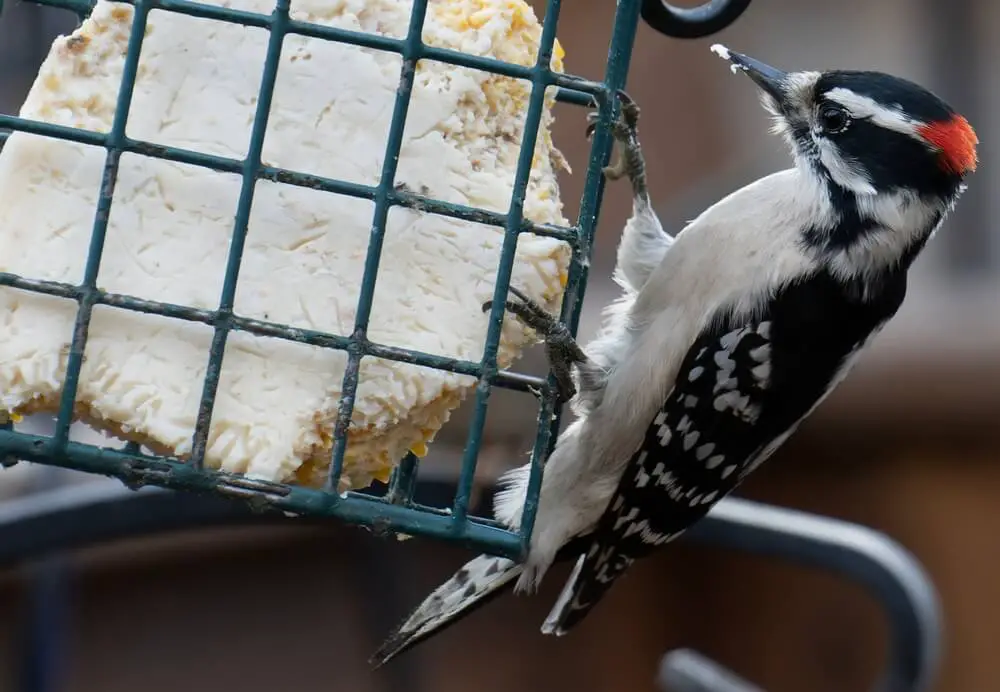
Unlike other woodpeckers, such as red-headed woodpeckers, downies do not cache food. This is why they are found drilling into the bark in the winter.
Tree-foraging birds do not have as much body fat as ground-dwelling birds, so they must continue to eat to stay warm. Downy woodpeckers readily eat suet because it offers a source of body-warming fat.
18. Males & Females Feed At Different Spots
Male downy woodpeckers then forage on small branches and weeds’ stems in the winter.
Females, however, will look for food on larger branches and tree trunks. However, if a male is not present, females will forage at smaller spots.
Males generally will also go higher up trees to feed, while females stay on the middle and lower portions.
19. Females Have Longer Tails Than Males
Due to the differences in foraging locations, females’ tails are longer than their male counterparts.
This is likely because they need additional support and balance on the larger vertical branches.
20. They Use Vibrations To Detect Prey
Woodpeckers have powerful bills and an acute sense of hearing to find insect prey. They drum on bark causing vibrations and holes that make the wood-boring, hiding insects move.
The sound of the bill strikes may also reverberate differently on trees. This occurs in spots that have damage from the galleries or tunnels of wood-boring insects.
Woodpeckers can detect the movement of insects and will use their long sticky tongue to retrieve the food.
Check out this video showing a male downy woodpecker drumming on tree bark:
21. They Are Monogamous
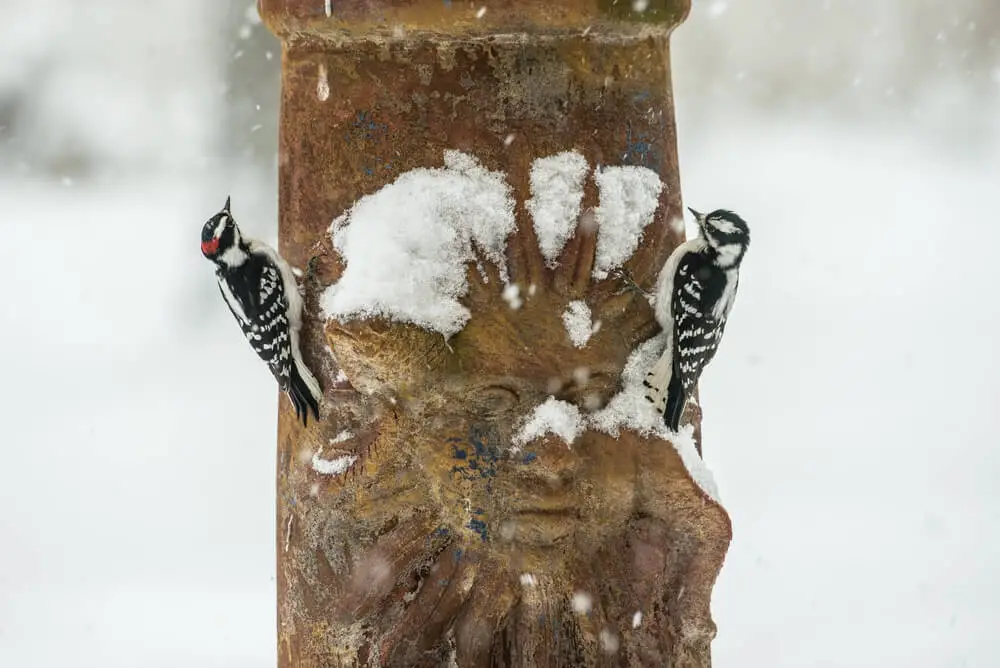
Usually, monogamous pairs are formed in the spring, and they stay together in the summer to raise their offspring. Once food sources become poor in the winter, the female leaves the male’s territory.
They may re-pair the following spring, but woodpeckers often find a new mate each season.
22. Male & Female Downies Work Together To Create A Nest
Once paired, male and female downy woodpeckers work together to create a nest hole for their offspring.
The nest is typically located in the middle of a tree to protect it from tree-top or trunk-base predators. The hole is lined with wood chips.
Completely excavated, new nest cavities can take up to 3 weeks to be completed.
Due to their smaller size, the downy woodpeckers use smaller limbs for their nesting sites. Their next cavities are also smaller, around 1 ½ inches in diameter, and 6 to 12 inches deep, which protects them from larger bird invasions.
23. They Are Born Naked & Blind
Hatchlings are born naked and blind and rely on their parents for warmth and protection.
The male downy woodpecker is the primary brooder during this time.
24. Downy Woodpecker Parents Share Parenting Duties
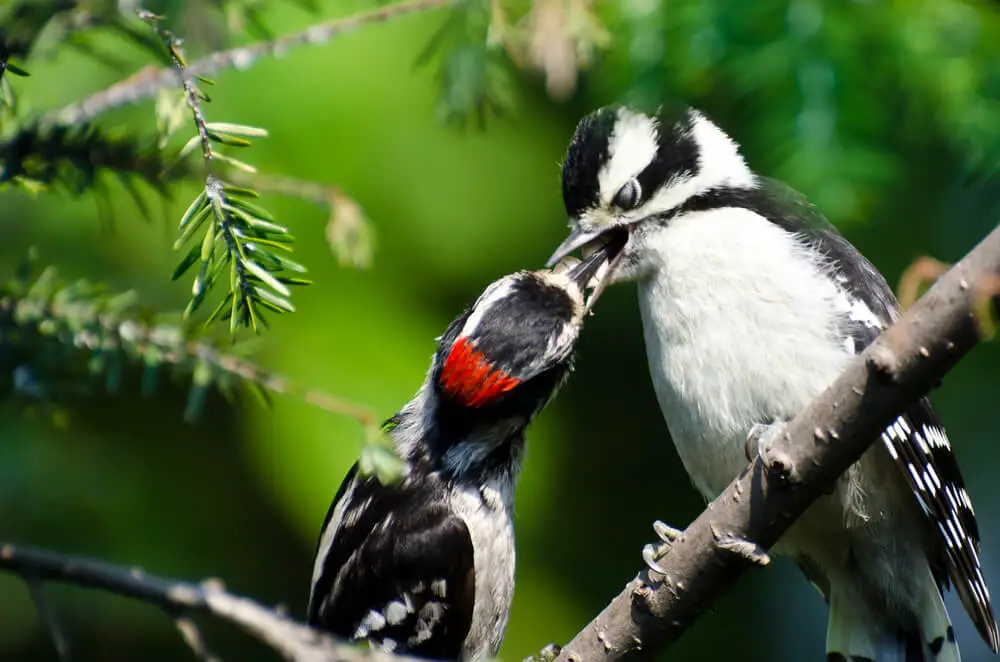
Males and females alike share in the incubation of the eggs for about 12 days and share the responsibility to feed their offspring.
After 20 to 25 days, the chicks leave the nest. The parents also may continue to feed the fledglings after they leave while they learn how to forage.
25. Males & Females Create Drumming Sounds
Both males and females drum against trees to communicate. The drilling of their bill is a different pressure from the drilling for excavating (slow-pecking).
Drumming is used to claim a territory and signal their readiness to mate. At times, their drumming is so rapid, it can sound like a single note.
26. They Use Physical Tactics To Protect Themselves
Downy woodpeckers fluff out their head feathers and spread out their tail feathers while moving their bills from side to side. This is to make themselves look bigger and more threatening to other birds to scare them off.
They can also flatten themselves against tree bark and stay still if a predator, such as a hawk, snake, or squirrel, is nearby. Their agile acrobatics can also help them to maneuver around obstacles to escape.
